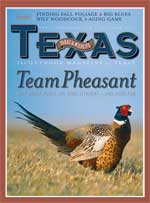
Atlanta State Park
Find peace, quiet and giant cats near the Arkansas border.
From Atlanta State Park’s Knights Bluff on a late fall afternoon, Wright Patman Lake stretches northward to the distant horizon — its still, silvery-black sheen broken only by the occasional passing boat or the splash of a leaping bass.
The park’s upland woods this time of year are just beginning to show tinges of autumn color, which, depending on the whims of nature, may burst forth in a riot of reds, oranges and golds, or quickly fade to brown and fall to the floor of the pine-hardwood forests. Visitors come to Atlanta State Park to access the lake named for a longtime U.S. Congressman, picnic and camp beneath loblolly pines and oaks, watch wildlife and revel in this refuge far from big city distractions.
Atlanta State Park distinguishes itself as the northeasternmost state park in the far-flung Texas state park system. The 1,475-acre park about 20 miles southwest of Texarkana is only a short drive from the point where the Texas, Arkansas and Louisiana borders meet. Outdoor lovers from Shreveport, La., only 60 miles away, cities in southwestern Arkansas and towns throughout northeast Texas find their way to the scenic lakeside park.
The gently rolling, forested land was once home to the Caddo Indians, who established villages and farmed the fertile land crisscrossed by creeks and dotted by springs. The mixed pine and hardwood forests, which abut the 22,000-acre reservoir impounded by the U.S. Corps of Engineers for flood control purposes, create a good habitat for a variety of birds and other wildlife.
In cool-weather months, white pelicans, double-breasted cormorant, gulls and other waterfowl mix with woodland species, such as the pine warbler, eastern bluebird and American goldfinch. Park visitors may even catch a glimpse during the winter of bald eagles searching lake waters for their next meal. White-tailed deer, raccoons, armadillos, bobcats and other critters populate the piney forests within park boundaries.
A large percentage of the park’s day users are anglers who use the park’s boat ramps to put in and take out. While bass are plentiful, according to park staff, Wright Patman Lake is known for its excellent catfish and crappie fishing. It’s not unusual for accomplished anglers to land 20- and 30-pound “cats.” One park ranger even netted a 60-pounder off park shores.
One visit to this sylvan lakeside sanctuary in the northeast corner of Texas, and you’ll likely be coming back, too.
— Rob McCorkle
For more information, call the park at (903) 796-6476 or visit <www.tpwd.state.tx.us/spdest/findadest/parks/atlanta>.

